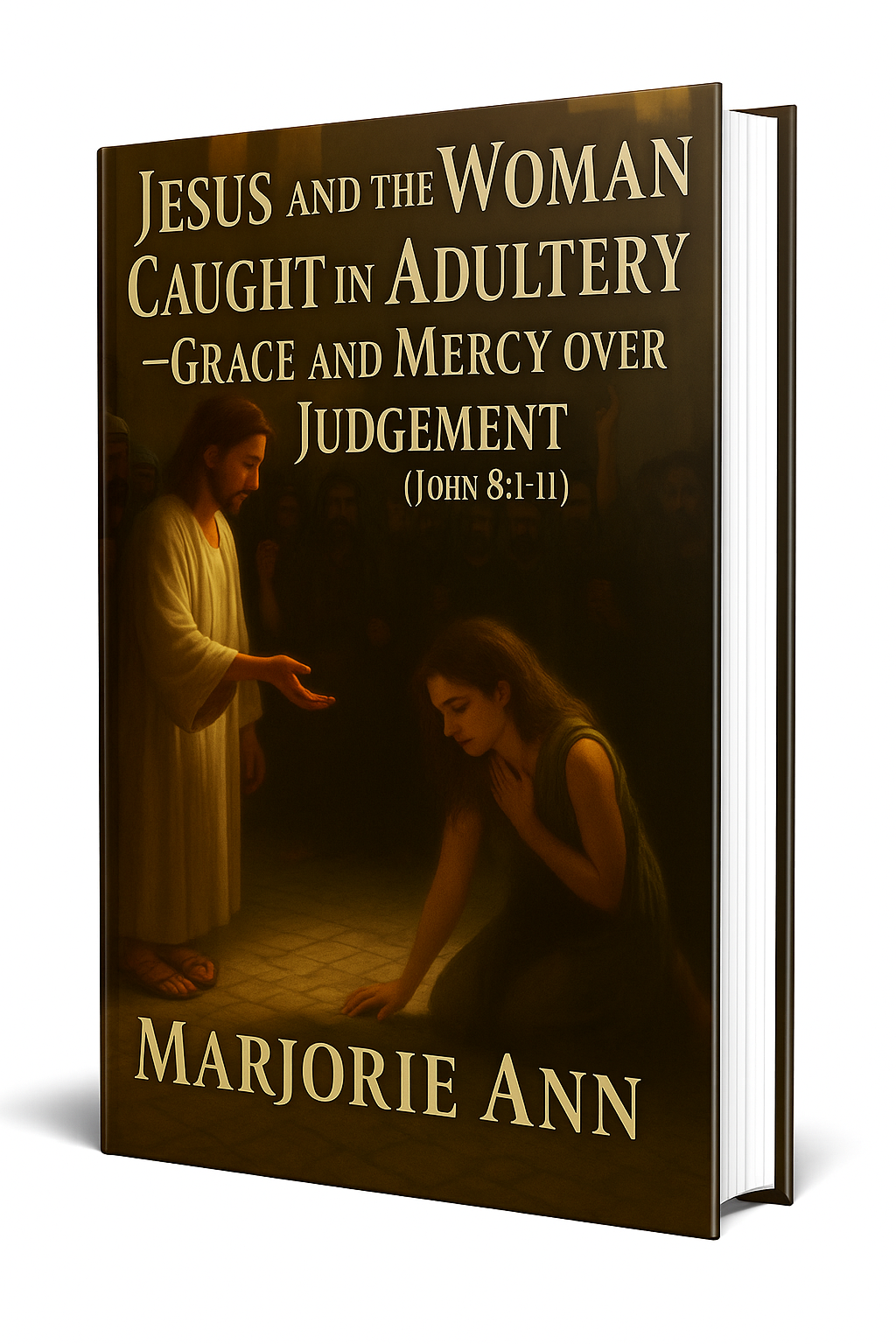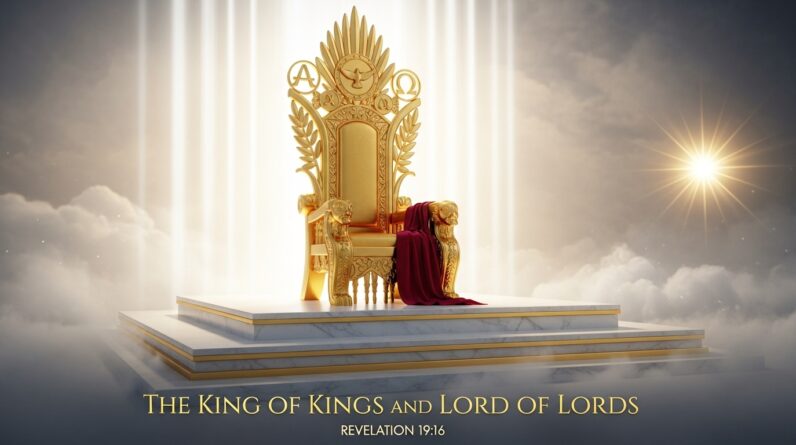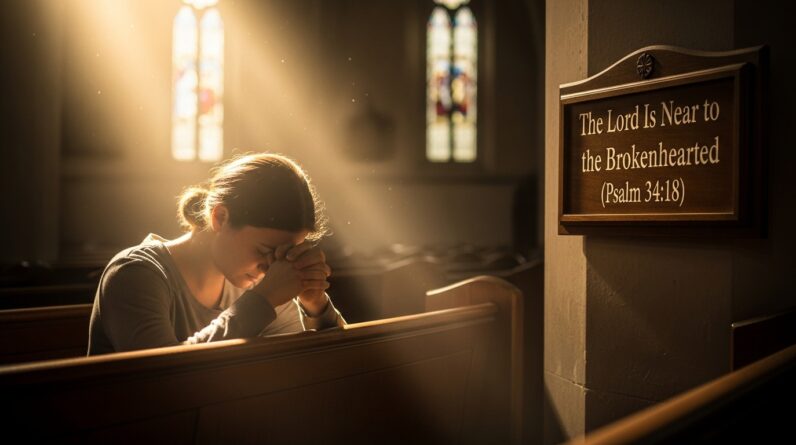Living By Faith, Not By Sight (2 Corinthians 5:7)
You’ve likely heard the phrase before: Living by Faith Not by Sight. It’s short, memorable, and packed with life-changing truth. The apostle Paul put it plainly when he wrote, “2 Corinthians 5:7: ‘For we live by faith, not by sight.’” That sentence isn’t a suggestion for a pious few; it’s a call for every follower of Jesus to trust God beyond what your eyes and circumstances can tell you. In this article, you’ll explore what it means to live by faith, why sight can deceive you, and how to cultivate a faith that holds fast in trials and triumphs alike.
Why “Living by Faith Not by Sight” Matters
When you choose to live by faith, you’re choosing a life anchored in God’s promises rather than in shifting circumstances. Sight is immediate and persuasive — your finances, your health, relationships, news cycles. But faith looks beyond the immediate to the unseen realities of God’s kingdom. The writer of Hebrews explains faith as confidence in what we hope for and assurance about what we do not see in Hebrews 11:1. That assurance changes how you respond when the wind blows and the waves rise.
The Biblical Foundation: 2 Corinthians 5:7 in Context
When Paul declared, “For we live by faith, not by sight,” he was reminding the Corinthian church — and you — that your citizenship is in heaven and your present life is shaped by the hope of things unseen, not by current trials or outward appearances. The broader passage in 2 Corinthians speaks of longing for the eternal dwelling God has prepared, and of walking in a way that pleases Him. You can read the verse and its context here: 2 Corinthians 5:7. Living by faith is less about ignoring reality and more about interpreting reality through God’s promises.
Faith Sees What Sight Cannot See
You must remember that sight is limited. Your eyes report immediate facts: a closed door, a wrong diagnosis, a broken relationship. But faith listens to the Lord who sees the end from the beginning. Paul himself encouraged believers to fix their eyes on what is unseen and eternal rather than what is seen and temporary in 2 Corinthians 4:18. When you live by faith, you’re looking at God’s eternal purposes and letting them shape your decisions.
Faith in the Midst of Waiting
Waiting is one of the greatest tests of living by faith. When an answer is delayed, sight says, “Give up.” But faith says, “God is at work.” Romans speaks directly to this tension: hope that is seen is no hope at all, because who hopes for what they already see? Instead, you wait with patience because you trust in God’s timing, as taught in Romans 8:24-25. Waiting refines your faith and deepens your dependence on God.
Trust, Not Self-Reliance
So many people live or tumble through life leaning on their own understanding. Yet Scripture calls you to trust in the Lord with all your heart and to lean not on your own insight, but to acknowledge Him in all your ways in Proverbs 3:5-6. Living by faith not by sight means you will seek God’s wisdom first and let His guidance direct your paths, even when logic or public opinion suggests otherwise.
Daily Decisions: Practical Faith
Living by faith doesn’t surrender you to inaction; it propels you into obedient living. Jesus taught you not to be anxious about tomorrow — to trust that your Father who cares for the birds and the flowers will care for you, and to seek first His kingdom and righteousness in Matthew 6:25-34. Faith informs your daily choices: how you spend your time, how you steward your money, how you engage your family, and how you respond to opportunities. When you walk in faith, your actions reflect trust in God’s provision.
Faith in the Face of Fear
Fear often disguises itself as realism. But realism without God is hopelessness. The psalmist knew the comfort of trusting God even through the darkest valleys: “Even though I walk through the darkest valley, I will fear no evil, for you are with me,” as found in Psalm 23:4. Living by faith not by sight means you face fear with the presence of Christ and the assurance that He walks with you through trials.
The Testimony of the Saints: Hebrews 11
If you need examples of what it looks like to live by faith, turn to Hebrews 11, the roll call of faith. It records ordinary men and women who trusted God in extraordinary ways — Abraham leaving home for a land he would inherit, Moses choosing to suffer with God’s people rather than enjoy sin’s fleeting pleasures. Hebrews 11 teaches that faith looks forward to God’s promised city and acts now in obedience. Read about faith’s heroes in Hebrews 11:1–40 and let their stories encourage you.
The Difference Between Faith and Blind Optimism
Faith is not blind optimism; it’s trust based on God’s revealed character and promises. Hope without the anchor of God’s Word is fragile. Scripture gives you facts about God — His love, His promises, His power. You can stand on that truth. Faith is informed by Scripture and lived out in obedience. As Romans reminds you, faith comes from hearing the message, and the message is heard through the word of Christ in Romans 10:17. If faith is to be real and transformative, it must be nourished by the Word.
Faith and the Reality of Suffering
Don’t mistake the call to live by faith as a promise of an easy life. The New Testament repeatedly affirms that suffering will come. But faith gives suffering a purpose. Paul wrote about the light and momentary troubles that produce for you an eternal weight of glory beyond all comparison in 2 Corinthians 4:17. When you’re living by faith, pain won’t be meaningless; God uses it to grow perseverance, character, and hope.

Faith Requires Risk
You will be tempted to choose what’s comfortable over what’s faithful. Living by faith not by sight, often requires risk — leaving a stable job for ministry, forgiving someone who hurt you deeply, or stepping into a relationship God is calling you to. When Peter stepped out of the boat to walk toward Jesus, he risked sinking but also experienced the power of faith in action (see Matthew 14:22-33). Risk taken in obedience to God can lead to deep blessing and spiritual growth.
Faith and Works: The Balance
Some people think faith alone means inactivity; others think works alone save. Scripture teaches a balanced truth: you’re saved by grace through faith, not by works, yet genuine faith naturally produces good works. Paul wrote clearly about salvation by grace through faith in Ephesians 2:8-9, and James reminded you that faith without works is dead in James 2:17. Living by faith not by sight means you trust Christ for salvation and then live out that trust in tangible love and service.
Faith and the Power of Confession
Believing God leads to speaking God’s truth. Your words shape your heart. Paul says that Christ lives in you, and the life you now live you live by faith in the Son of God in Galatians 2:20. When you regularly confess your dependence on Jesus — verbally and prayerfully — you’re renewing your trust and aligning your actions with your beliefs.
Faith When You Don’t Feel It
There will be seasons when your feelings don’t match your faith. You might not feel peaceful, yet you can choose to act in faith. The apostle Peter’s rebuke to Thomas still instructs you: Blessed are those who have not seen but have believed in John 20:29. Your faith is often proven and strengthened in the absence of comforting emotions. Choose to trust God even when feelings are weak.
How to Grow Your Faith
Faith grows through hearing the Word, praying, obedience, and remembering God’s faithfulness. Romans tells you faith comes from hearing the message of Christ in Romans 10:17. Make Scripture reading a daily habit; pray with expectancy; step out in obedience even in small things; celebrate God’s past faithfulness so your heart will be primed to trust Him for the future.
Prayer: The Practice of Trust
Prayer is not just asking; it’s the ongoing conversation that deepens your trust. When you tell God your fears and bring your needs before Him, you are practicing Living by Faith Not by Sight. The Lord invites you to cast all your anxiety on Him because He cares in 1 Peter 5:7. In prayer you learn His heart and grow in confidence that He hears and acts.
Faith and the Community of Believers
You don’t practice faith in isolation. The church is God’s instrument to encourage, correct, and strengthen you. Hebrews urges you to spur one another on toward love and good deeds and not give up meeting together in Hebrews 10:24-25. Surround yourself with people who will pray for you, speak God’s truth into your life, and help you live by faith.
Stories of Ordinary Faith
You’ll find Living by Faith Not by Sight in ordinary places: a mother who trusts God for a prodigal child, a young person who follows God into vocational ministry, an elder who clings to Christ in dementia. The Bible itself is full of ordinary men and women who believed. Consider Abraham, who left his home and trusted God for a son, even in old age (Hebrews 11:8-12). Their faith was not proof against pain, but it was proof of God’s sustaining presence.
When Sight Is Useful — But Not Ultimate
Sight isn’t evil. God gave you senses to navigate life. But the problem comes when sight becomes your ultimate guide instead of Scripture and prayer. You can use sight as a tool while keeping faith as your foundation. The balance is to act responsibly — get medical tests, seek wise counsel — but then trust God for outcomes. Let tangible information inform your choices without displacing your ultimate dependence on God.
Obstacles to Living by Faith
Several things can hinder your walk of faith: pride, lack of Scripture knowledge, fear of failure, or unresolved sin. Pride whispers that you know best; ignorance of God’s Word leaves you unarmed; fear paralyzes; sin darkens your spiritual vision. Confront these obstacles with confession, repentance, study of Scripture, and reliance on the Holy Spirit. The Bible promises restoration when you humbly return to God.
The Reward of Living by Faith
What do you gain when you choose faith over sight? You gain peace that transcends circumstances, purpose in suffering, and the hope of eternal life. Hebrews describes faith as the assurance of things hoped for and the conviction of things not seen in Hebrews 11:1. Paul teaches that the sufferings of this present time are not worth comparing with the glory to be revealed to you in Romans 8:18. Living by faith aligns you with God’s eternal perspective and enriches your life with meaning.
Practical Steps to Choose Faith Today
You don’t have to overhaul your life overnight. Start with small steps that build into a habit:
- Read Scripture daily, beginning with the Gospels and passages that strengthen trust.
- Pray honestly and regularly, bringing your worries to God.
- Practice obedience in simple acts — generosity, serving, and forgiveness.
- Surround yourself with other believers who encourage your faith.
- Remember God’s past faithfulness in a journal of answered prayers.
These steps will help you move from theory to practice in Living by Faith Not by Sight.
What If You Struggle to Believe?
You aren’t the first to ask that question. Even honest followers of Jesus have struggled with unbelief. The disciples once said, “Lord, increase our faith” (Luke 17:5). The good news is that God meets you in your weakness. He invites you to bring your doubts to Him, to ask for help, and to step out in small acts of trust. Jesus told the man who said, “I believe; help my unbelief” that God honors faith even when it’s imperfect. Keep coming to the Lord; He will strengthen you.
A Final Word on Faith and Resurrection Hope
At the heart of Living by Faith Not by Sight is the resurrection. Your faith rests on the death and resurrection of Jesus Christ. Because He rose, your hope is not wishful thinking but a living reality. Paul said you were saved in hope and that hope in the unseen reality of God’s promises sustains you through life’s trials (Romans 8:24-25). Living by faith means living in the light of the resurrection every day.
Closing Appeal: Trust Christ Today
If you haven’t yet made the personal decision to trust Jesus Christ, remember that Living by Faith Not by Sight starts with admitting your need for a Savior and turning to Him in faith. Paul wrote that God’s grace transforms you and gives you new life in Christ in passages like Galatians 2:20 and Ephesians 2:8-9. Come to Christ in prayer if you’ve never done so — confess your need, believe in His death and resurrection, and begin to follow Him. That first step is the beginning of a life truly living by Faith not by Sight.
Encouragement for Your Journey
As you leave here today, remember that faith is both a gift and a discipline. It will grow by practice, be tested by trials, and be rewarded by the faithfulness of God. Keep your eyes fixed on Jesus, run the race with endurance, and let your life be a testimony of trust. Hebrews exhorts you to fix your eyes on Jesus, the pioneer and perfecter of faith, who endured the cross for the joy set before Him in Hebrews 12:1-2. Follow Him, and you will truly be living by Faith, not by Sight.
Explore More
For further reading and encouragement, check out these posts:
👉 7 Bible Verses About Faith in Hard Times
👉 Job’s Faith: What We Can Learn From His Trials
👉 How To Trust God When Everything Falls Apart
👉 Why God Allows Suffering – A Biblical Perspective
👉 Faith Over Fear: How To Stand Strong In Uncertain Seasons
👉 How To Encourage Someone Struggling With Their Faith
👉 5 Prayers for Strength When You’re Feeling Weak

📘 Jesus and the Woman Caught in Adultery – Grace and Mercy Over Judgement
A powerful retelling of John 8:1-11. This book brings to life the depth of forgiveness, mercy, and God’s unwavering love.
👉 Check it now on Amazon
As a ClickBank & Amazon Affiliate, I earn from qualifying purchases.
Acknowledgment: All Bible verses referenced in this article were accessed via Bible Gateway (or Bible Hub).
“Want to explore more? Check out our latest post on Why Jesus? and discover the life-changing truth of the Gospel!”








